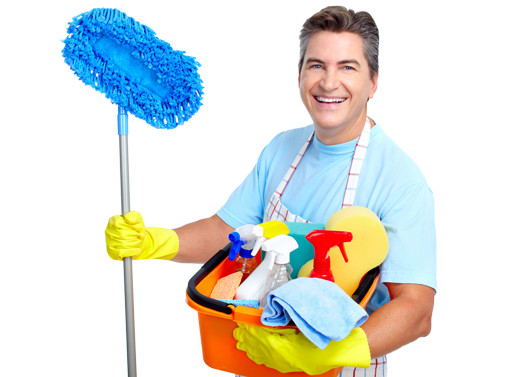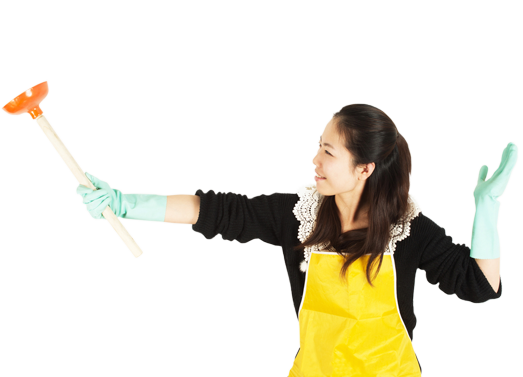Enjoy Clean Air Indoors by Eliminating Pet Odors
Posted on 28/06/2025
Enjoy Clean Air Indoors by Eliminating Pet Odors
Every pet owner knows the joys of coming home to a furry friend, but not everyone enjoys the lingering smells that sometimes follow. If you're striving for a fresh, clean air environment indoors, understanding how to effectively remove pet odors is essential. In this comprehensive guide, discover practical tips, expert advice, and the benefits of removing pet scents to breathe easier and enjoy a healthier home.

Why Eliminating Pet Odors Matters for Indoor Air Quality
Pets, whether they are dogs, cats, birds, or other animals, can introduce a variety of odors into your home. These smells are often caused by dander, urine, saliva, and their fur or feathers. While you may have grown accustomed to your pet's scent, guests and family members may notice an immediate difference upon entering your living space.
- Improved Health: Bad odors often come from bacteria and allergens, which can trigger respiratory problems, allergies, or asthma attacks.
- Better Home Environment: Clean, fresh air improves your mood, productivity, and overall sense of wellbeing.
- Greater Guest Comfort: Eliminating pet odors makes your home more welcoming for visitors and reduces embarrassment.
- Extended Home Lifespan: Persistent pet odors and waste can damage flooring, furniture, and air systems, causing costly repairs over time.
Enjoying clean air indoors by eliminating pet odors isn't just about comfort--it's about maintaining a healthy, breathable, and pleasant living environment for everyone.
Sources of Pet Odors in the Home
Before you can effectively banish odors, it's vital to identify their sources. The most common places where pet smells originate include:
- Pet Beds and Blankets: These absorb sweat, oils, and fur over time.
- Litter Boxes: Not just for cats, but also rodents and rabbits.
- Carpets and Rugs: Trap dander, accidents, and hair deep within the fibers.
- Furniture: Sofas, chairs, and cushions commonly hold onto stale pet smells.
- Floors and Baseboards: Urine "marking" and drool can seep into crevices.
- Air Vents: Circulate dander and micro-odor particles throughout the house.
Identifying these problem areas is crucial for targeting your odor-elimination efforts and creating an optimal indoor air environment.
Best Practices to Remove Pet Odors and Improve Indoor Air Quality
1. Establish a Thorough Cleaning Routine
Consistency is key to enjoying fresh air by eliminating pet odors indoors. Create a regular cleaning schedule for both your home and your pet:
- Vacuum carpets, rugs, and upholstery weekly. Use a vacuum with a high-efficiency particulate air (HEPA) filter to trap allergens and tiny odor particles effectively.
- Wash pet bedding and blankets with hot water and mild detergent at least once a week.
- Wipe down hard surfaces (floors, baseboards, and pet feeding spots) with an enzymatic cleaner that can break down organic pet waste.
- Clean litter boxes, cages, or aquariums daily, replacing litter and washing the container thoroughly.
- Brush and bathe your pets as recommended for their breed and type. Pet grooming helps reduce loose fur and dander, minimizing odor at the source.
2. Utilize Natural Air Purifiers
Improving indoor air quality by eliminating pet odors often involves introducing natural purifiers into your living space:
- Houseplants: Spider plants, pothos, and peace lilies can absorb toxins and produce cleaner, fresher air. Check for pet-safe varieties if your pets like to nibble!
- Activated Charcoal: Place sachets around odor-prone areas--it's highly effective at absorbing unpleasant smells organically.
- Baking Soda: Sprinkle it on carpets or place open boxes near litter trays to neutralize odors. Always vacuum thoroughly after use.
- White Vinegar: Use diluted solutions to clean surfaces and remove lingering smells naturally.
3. Invest in High-Quality Air Purifiers
An air purifier with a true HEPA filter is one of the most effective tools for long-term odor control. These devices remove up to 99.97% of airborne particles, including pet dander, pollen, dust, and tiny odor molecules.
- Choose a purifier with a carbon filter to specifically target and absorb odors.
- Place purifiers in rooms where pets spend the most time for optimal results.
- Maintain and replace filters regularly according to manufacturer guidelines to ensure efficiency.
4. Address Accidents Immediately
For the freshest indoor air, eliminating pet odors as soon as they occur is crucial. Prompt action prevents lingering smells and permanent stains:
- Blot up any messes with paper towels--never rub, as it spreads the stain.
- Use a pet-safe enzymatic cleaner that breaks down the biological material responsible for odors, not just masks it.
- Allow the area to dry completely, and if needed, treat a second time for deep stains.
Never use ammonia-based cleaners; their scent may encourage repeat marking in pets.
5. Improve Ventilation
Allowing fresh air to circulate is one of the easiest and most effective ways to enjoy clean air indoors and eliminate pet odors:
- Regularly open windows and doors to bring in outdoor air, even for just fifteen minutes a day.
- Utilize exhaust fans in kitchens and bathrooms to remove moist, odor-laden air.
- Consider installing an air exchange system for continuous ventilation in homes with multiple pets.
Advanced Techniques for Persistent Pet Odors
Professional Carpet and Upholstery Cleaning
If standard cleaning doesn't cut it, hire professional steam or dry cleaners. They have specialized equipment and solutions for extracting deeply embedded pet odors from carpets, rugs, mattresses, and furniture.
Deep Clean Air Ducts and HVAC Systems
Over time, heating and cooling ducts can trap pet dander and distribute odors throughout your home. Scheduling a professional duct cleaning every few years helps maintain optimal indoor air quality.
Replace or Upgrade Soft Furnishings
- If a rug or throw has repeatedly absorbed odors, consider replacing it with a washable or stain-resistant version.
- Choose furniture materials (like microfiber or leather) that are less likely to absorb and retain smells.
- Frequently wash slipcovers, pet beds, and throw pillows.
Ozone Machines and Ionizers (With Caution)
*Caution:* Ozone generators and some ionizers neutralize odors, but ozone can be harmful to humans and animals at high levels. Only use these products according to manufacturer instructions and never while occupied. For most homes, stick with HEPA/carbon filters and ventilation for safe, effective results.
Preventing Pet Odors Before They Start
1. Consistent Pet Grooming
Regular bathing, brushing, and dental care for your pets significantly reduce odor creation at its source. Dental hygiene is often overlooked, yet oral bacteria are a major contributor to unpleasant smells.
2. Quality Diet and Hydration
A balanced, nutritious diet keeps your pet's coat, skin, and digestion healthy. Pets with skin or digestive issues often have stronger odors. Ensure access to clean water at all times.
3. Training and Scheduling
- Stick to regular bathroom breaks and walks for dogs.
- Clean litter boxes often--cats prefer them spotless and are less likely to have accidents outside the box.
- Train pets to stay off restricted areas like beds or certain sofas to control the spread of fur and dander.
4. Airflow Optimization
Position furniture and pet beds to facilitate air movement. Use ceiling and floor fans to keep air circulating, ensuring pet areas aren't stuffy or stagnant.
Recommended Products to Eliminate Pet Odors Indoors
- HEPA Air Purifier with Carbon Filter: Brands like Levoit, Honeywell, and Dyson are popular for homes with pets.
- Enzymatic Cleaners: Nature's Miracle and Rocco & Roxie formulas break down organic pet stains and odors safely.
- Stain-Proof, Machine Washable Pet Beds: Look for removable covers and moisture-resistant cores.
- Odor Skull Neutralizing Candles: Pet-specific candles absorb rather than mask unpleasant scents; choose non-toxic varieties.
- Grooming Tools: Slicker brushes, de-shedders, pet wipes, and dry shampoos help maintain a clean, minimally odorous pet.
Common Myths About Indoor Pet Odor Removal
- "All you need is air freshener." False! Most sprays only mask odors, allowing underlying sources to persist. True indoor air pet odor elimination tackles the cause, not the symptoms.
- "You can never really get rid of pet smells." Not true! With consistent effort, you can enjoy clean, fresh air regardless of how many pets you have.
- "Any cleaner is safe for pets." Not always! Avoid harsh chemicals or those not specifically marked as pet-safe.

Benefits of Clean, Odor-Free Air Indoors
- Healthier Living: Fewer allergens and bacteria in the air result in fewer symptoms for allergy and asthma sufferers.
- Enhanced Comfort: Odor-free air means a more relaxing, enjoyable home for you and your loved ones.
- Greater Longevity of Home Assets: Regular cleaning and prevention protect your carpets, furniture, and air systems.
- Positive Impressions: Guests and homebuyers alike will appreciate a space that smells fresh and is clearly well cared for.
Conclusion: Breathe Easy and Enjoy Your Pets
Living with pets doesn't mean sacrificing the pleasure of clean air indoors. By eliminating pet odors at their source and adopting preventative measures, you'll create a home that is comfortable, welcoming, and healthy for all. Remember, it's a combination of regular cleaning, the right products, and a proactive approach that ensures you--and your pets--can both enjoy a fresh, odor-free home. Embrace these solutions today and breathe easy as you share your space with your furry family members.
Ready to enjoy clean air indoors by eliminating pet odors? Start with small changes, choose products and cleaning solutions designed for your unique needs, and reclaim the freshness your home deserves!





